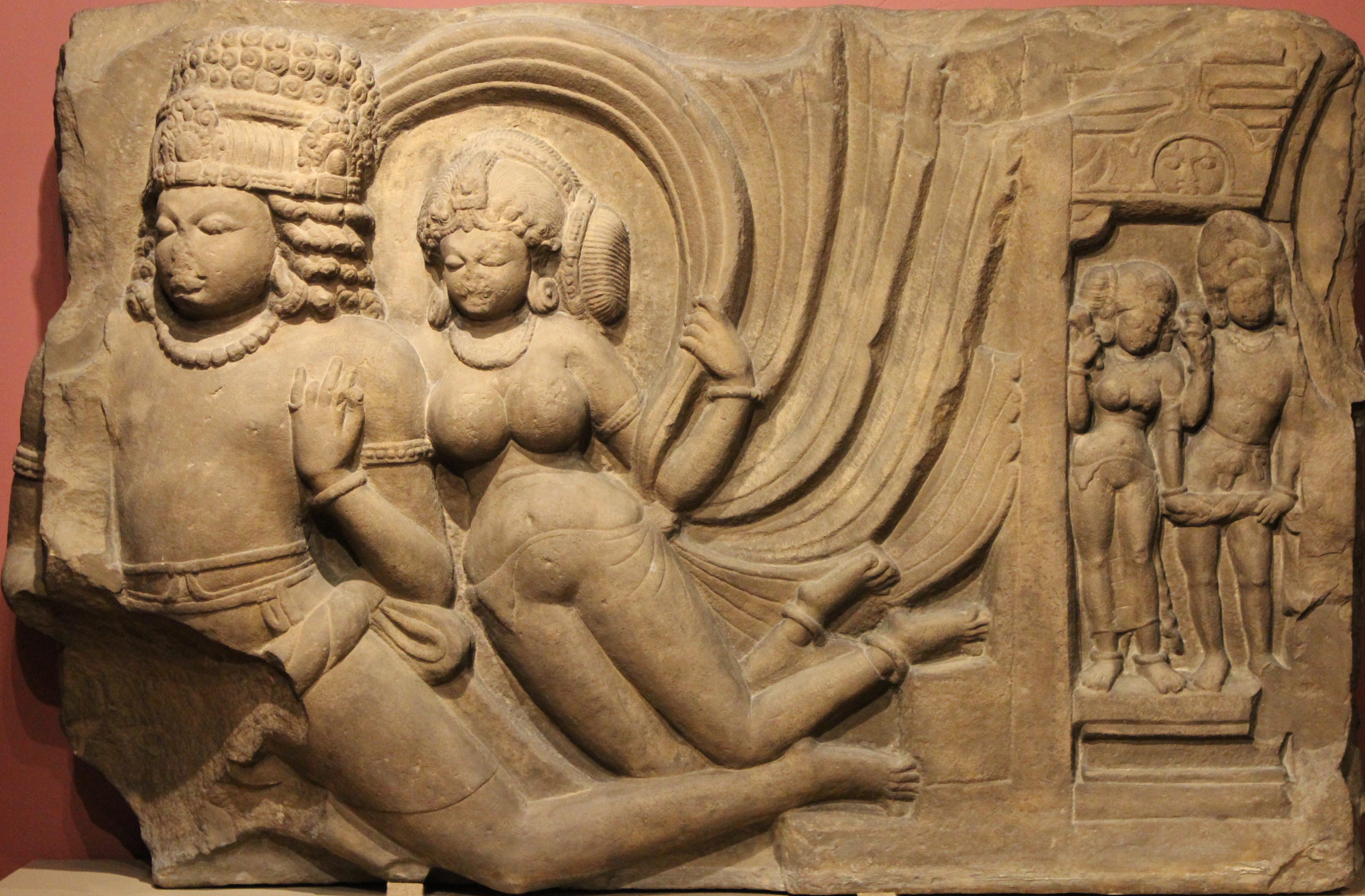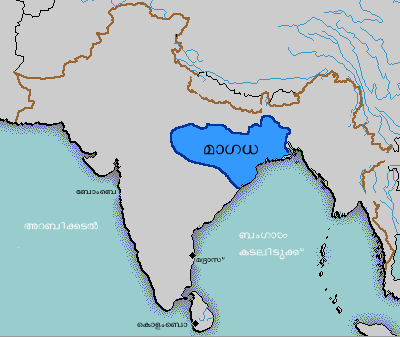|
Udayana (king)
Udayana was a king of Vatsa in India, a contemporary of Gautama Buddha. He is a popular figure in Indian literature, for both his romantic and military stories, but though he probably existed, little is known for certain about his life or reign. According to Buddhist sources, the Buddha visited Kauśāmbī several times during the reign of Udayana on his effort to spread the dharma, the Eightfold Path and the Four Noble Truths. Udayana was an Upasaka">Four Noble Truths: BUDDHIST PHILOSOPHY Encycl .... Udayana was an Upasaka (lay follower) of Buddha. The Chinese translation of the Buddhist canonical text states that the first image of Buddha, curved out of sandalwood was made under the instruction of Udayana. Life Niti Adaval mentions about Udayana and his love for music, art and fondness of women. Due to a ''dohada'' ("pregnancy craving"), Mṛgāvatī, pregnant with Udayana, is either covered or immersed in red. A monstrous bird mistakes her for raw meat and carries he ... [...More Info...] [...Related Items...] OR: [Wikipedia] [Google] [Baidu] |
Vatsa
Vatsa or Vamsa (Pali and Ardhamagadhi: , literally "calf") was one of the sixteen Mahajanapadas (great kingdoms) of Uttarapatha of ancient India mentioned in the Aṅguttara Nikāya. Location The territory of Vatsa was located to the south of the Gaṅgā river, and its capital was the city of or , on the Yamunā river and corresponding to the modern-day location of Kosam. History The early period The Vatsas were a branch of the Kuru dynasty. During the Rig Vedic period, the Kuru Kingdom comprised the area of Haryana/ Delhi and the Ganga-Jamuna Doab, till Prayag/ Kaushambi, with its capital at Hastinapur. During the late-Vedic period, Hastinapur was destroyed by floods, and the Kuru King shifted his capital with the entire subjects to a newly constructed capital that was called Kosambi or Kaushambi. In the post Vedic period, when Arya Varta consisted of several Mahajanpads, the Kuru Dynasty was split between Kurus and Vatsas. The Kurus controlled the Haryana/ Delhi/ Upper ... [...More Info...] [...Related Items...] OR: [Wikipedia] [Google] [Baidu] |
Kubera
Kubera ( sa, कुबेर, translit=Kuberā) also known as Kuvera, Kuber and Kuberan, is the god of wealth, and the god-king of the semi-divine yakshas in Hinduism. He is regarded as the regent of the north (''Dikpala''), and a protector of the world ('' Lokapala''). His many epithets extol him as the overlord of numerous semi-divine species, and the owner of the treasures of the world. Kubera is often depicted with a plump body, adorned with jewels, and carrying a money-pot and a club. Originally described as the chief of evil spirits in Vedic-era texts, Kubera acquired the status of a '' deva'' (god) only in the ''Purana''s and the Hindu epics. The scriptures describe that Kubera once ruled Lanka, but was overthrown by his half-brother Ravana, later settling in the city of Alaka in the Himalayas. Descriptions of the "glory" and "splendour" of Kubera's city are found in many scriptures. Kubera has also been assimilated into the Buddhist and Jain pantheons. In Buddhis ... [...More Info...] [...Related Items...] OR: [Wikipedia] [Google] [Baidu] |
Milinda Panha
The ''Milinda Pañha'' () is a Buddhist text which dates from sometime between 100 BC and 200 AD. It purports to record a dialogue between the Indian Buddhist sage Nāgasena, and the 2nd century BC Indo-Greek king Menander I (Pali: ''Milinda'') of Bactria, in Sagala, present-day Sialkot. The ''Milinda Pañha'' is regarded as canonical in Burmese Buddhism, included as part of the book of '' Khuddaka Nikaya''. An abridged version is included as part of Chinese Mahayana translations of the canon. The ''Milinda Pañha'' is not regarded as canonical by Thai or Sri Lankan Buddhism, however, despite the surviving Theravāda text being in Sinhalese script. The Chinese text titled the Monk Nāgasena Sutra corresponds to the first three chapters of the Milindapanha. It was translated sometime during the Eastern Jin dynasty (317–420). History It is generally accepted by scholars that the work is composite, with additions made over some time. In support of this, it is noted th ... [...More Info...] [...Related Items...] OR: [Wikipedia] [Google] [Baidu] |
Dhammapada
The Dhammapada ( Pāli; sa, धर्मपद, Dharmapada) is a collection of sayings of the Buddha in verse form and one of the most widely read and best known Buddhist scriptures. The original version of the Dhammapada is in the Khuddaka Nikaya, a division of the Pali Canon of Theravada Buddhism. The Buddhist scholar and commentator Buddhaghosa explains that each saying recorded in the collection was made on a different occasion in response to a unique situation that had arisen in the life of the Buddha and his monastic community. His translation of the commentary, the ''Dhammapada Atthakatha'', presents the details of these events and is a rich source of legend for the life and times of the Buddha. Etymology The title "Dhammapada" is a compound term composed of ''dhamma'' and ''pada'', each word having a number of denotations and connotations. Generally, ''dhamma'' can refer to the Buddha's "doctrine" or an "eternal truth" or "righteousness" or all "phenomena"; at its ... [...More Info...] [...Related Items...] OR: [Wikipedia] [Google] [Baidu] |
Priyadarśikā
''Priyadarsika'' is a Sanskrit play attributed to king Harsha (606 - 648). It was first translated into English by G. K. Nariman, A. V. Williams Jackson, and Charles J. Ogden and published by the Columbia University Press in 1923 as the tenth volume of the 13 volume Columbia University Indo-Iranian Series (1901–32). See also * List of Sanskrit plays in English translation * ''Ratnavali'' * ''Nagananda'' References External links *Priyadarsika', translated by G. K. Nariman and A. V. Williams Jackson Abraham Valentine Williams Jackson, L.H.D., Ph.D., LL.D. (February 9, 1862 – August 8, 1937) was an American specialist on Indo-European languages. Biography He was born in New York City on February 9, 1862. He graduated from Columbia Un ... Ancient Indian literature Sanskrit texts 7th-century plays 7th-century Indian books Sanskrit plays {{India-theat-stub ... [...More Info...] [...Related Items...] OR: [Wikipedia] [Google] [Baidu] |
Kathāsaritsāgara
The ''Kathāsaritsāgara'' ("Ocean of the Streams of Stories") (Devanagari: कथासरित्सागर) is a famous 11th-century collection of Indian legends, fairy tales and folk tales as retold in Sanskrit by the Shaivite Somadeva. ''Kathāsaritsāgara'' contains multiple layers of story within a story and is said to have been adopted from Guṇāḍhya's ''Bṛhatkathā'' ("the Great Narrative"), which was written in a poorly-understood language known as Paiśāchī. The ''Bṛhatkathā'' is no longer extant but several later adaptations still exist — the ''Kathāsaritsāgara'', '' Bṛhatkathamanjari'' and '' Bṛhatkathāślokasaṃgraha''. However, none of these recensions necessarily derives directly from Gunadhya, and each may have intermediate versions. Scholars compare Guṇāḍhya with Vyasa and Valmiki even though he did not write the now long-lost ''Bṛhatkathā'' in Sanskrit. Presently available are its two Sanskrit recensions, the '' Bṛhatkathaman ... [...More Info...] [...Related Items...] OR: [Wikipedia] [Google] [Baidu] |
Pratijnayaugandharayana
''Pratijnayaugandharayana'' ( sa, प्रतिज्ञायौगन्धरायणम्, ) (English: ''The Pledge of Minister Yaugandharāyaṇa'') is a Sanskrit play in four acts written by the ancient Indian poet Bhāsa. It is the oldest extant political play of India and the prequel to Bhāsa's ''Svapnavasavadattam''. These plays were written by Bhāsa on the account of Udayana, king of Vatsa (Kaushambi). Throughout the play, Yaugandharayana, minister of Udayana, takes two vows which are ultimately fulfilled. Background ''Pratijnayaugandharayana'' was rediscovered, along with Bhāsa's 12 other plays, in 1912 by Indian scholar T. Ganapati Sastri. As with other plays of Bhasa, the name of the author does not appear in the prologue of the play or anywhere else in the extant manuscripts. But a verse from the play is attributed to Bhasa in ''Subhashitavali'', a 15th century anthology compiled by Vallabhadeva. The play is based on Udayana's story in the ancient Indian epic ... [...More Info...] [...Related Items...] OR: [Wikipedia] [Google] [Baidu] |
Svapnavasavadattam
''Svapnavasavadattam'' ( sa, स्वप्नवासवदत्तम्, ) ( English: ''The dream of Vasavadatta'') is a Sanskrit play in six acts written by the ancient Indian poet Bhāsa. The plot of the drama is drawn from the romantic narratives about the kaushambi king Udayana and Vasavadatta, the daughter of Pradyota, the ruler of Avanti, which were current in the poet's time and which seem to have captivated popular imagination. The main theme of the drama is the sorrow of Udayana for his queen Vasavadatta, believed by him to have perished in a fire, which was actually a rumour spread by Yaugandharayana, a minister of Udayana to compel his king to marry Padmavati, the daughter of the king of Magadha. It forms, in context, a continuation of his another drama, '' Pratijnayaugandharayana''. Background The complete text of the ''Svapnavasavadattam'' was long lost until it was discovered by Indian scholar T. Ganapati Sastri in Kerala in 1912. Characters The main ... [...More Info...] [...Related Items...] OR: [Wikipedia] [Google] [Baidu] |
Vidyadhara
Vidyadhara(s) (Sanskrit , literally "wisdom-holders") are a group of supernatural beings in Indian religions who possess magical powers. In Hinduism, they also attend Shiva, who lives in the Himalayas. They are considered ''Upadeva''s, or demi-gods. In Hinduism In Hindu epics In the Hindu epics, Vidyādharas are described as essentially spirits of the air. They are described as doing different activities in the epics like gazing at human prowess with astonishment, strewing flowers watching a combat, rejoicing with music and laughter, crowned with wreaths and fleeing with their wives from danger. They possess great magical powers like the ability to diminish their size. They are endowed with epithets describing them as "doers of good and devoted to joy". They also live in Gandhamandhana mountain and other Himalayan mountains with Kinnaras. They are also described residing on Mount Krauncha, on Citrakuta where Rama saw Vidyadhara women playing, in the hills of Malabar and in ... [...More Info...] [...Related Items...] OR: [Wikipedia] [Google] [Baidu] |
Pradyota
Pradyota dynasty, also called ''Prthivim Bhoksyanti'' (lit. enjoying the earth), is an ancient Indian dynasty, which ruled over Avanti and Magadha, though most of the Puranas ''(except a manuscript of the Brahmanda Purana, preserved in the University of Dhaka)'' say that this dynasty succeeded the Brihadratha dynasty in Magadha. The dynasty ruled for 138 years. ''Pradyota'' is the founder of the dynasty and ruler of Avanti & Magadha. Pradyota dynasty was Second dynasty who ruled Magadha. Pradyota was son of Pulika (''Punika''), who is said to have killed Ripunjaya of Brihadratha dynasty at Rajagriha, to make his son the king. Pradyota dynasty was preceded by Brihadratha dynasty and succeeded by Haryanka dynasty of Magadha. Pradyota is said to have ruled for 23 years. Palaka's reign started in (659–635 BCE) according to ''Visarasreni'' of Merutunga. He was the son of Chanda Pradyota of Magadha. He is said to have conquered Kosambi. Palaka is said to have ruled for 2 ... [...More Info...] [...Related Items...] OR: [Wikipedia] [Google] [Baidu] |
.jpg)



